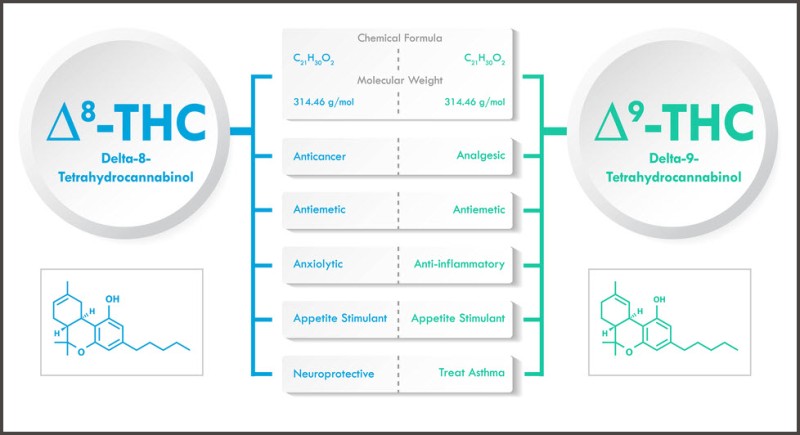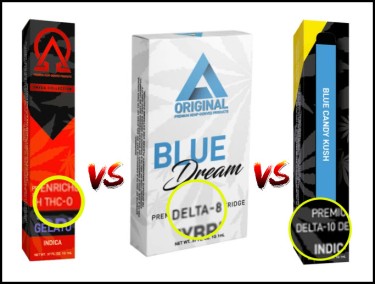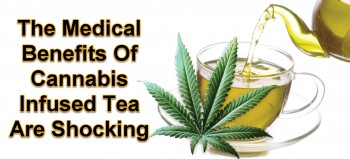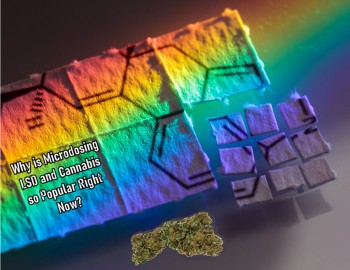The Hemp-Derived Delta THC Niche is Booming Right Now, What You Need to Know!
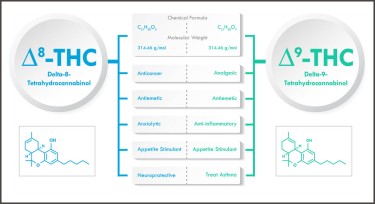
The hemp and cannabis industry in the US is one that gradually changes with respect to laws and established guidelines. The situation with cannabis being legalized in some states for medical and recreational use, while is still criminalized by the federal government following the Schedule 1 classification is absurd. It is therefore no surprise that a seeming boom in hemp-derived products is on the horizon, and many are already setting up themselves to be cash in on the explosion.
The next boom in the industry involves hemp-derived THCs, or Delta-8,9,10 THCs, and there are a number of major things that anyone who wishes to be in the hemp industry should know before they start selling products. Read on as we look into where the industry came from, where it is now and where it is headed with the next boom on the horizon.
Background of the hemp industry
For many who are not aware, hemp and cannabis are species of the same plant, however hemp is significantly distinct from cannabis. This is why the crop was approved in the US for legal cultivation in 2014. A large reason for this was for research as a source of the crop for seed and fiber. The plant quickly made headlines as a high CBD cultivar with low THC content which sits right with many intending players looking for ways to jump into the industry.
The growth of hemp fiber and seeds provided great room for economic growth, however the industry seemed not to be fully matured enough for the projected growth. The growth was bound to incur major subsidies and most of the commodities were imported regularly at low prices which meant growing cost was higher. Ultimately, farmers sought out other less costly alternatives which gave room for the surge of CBD.
The 2018 Farm Bill came at a time when the popularity of CBD as the legal cannabinoid with no psychoactive effect was in full flow. Quickly the former fiber and seed crop, because a source of CBD, fostered a growing health and welness market. The language of the Farm Bill saw a change from industrial hemp to medicinal hemp which suggests that the government gave the nod for the cannabinoid crop growing. A change in the approach of the FDA towards CBD after it had initially approved Epidiolex halted the progress of the CBD-derived hemp industry. What followed was a price collapse and millions of pounds of hemp and CBD isolate without sufficient buyers. When it seems the industry was down for the count, Delta-8 THC came to the rescue.
Hemp-derived THC
The legality of THC derived from hemp requires no more than 0.3% of Delta-9 THC to be present in the source. This however was not captured to include Delta-8 THC which is an isomer of the psychoactive cannabinoid Delta-9 THC. The economic promise of Delta-8 THC was also improved after scientific means of converting CBD isolate to Delta-8 THC showed effective promise. This projected Delta-8 THC as the resuscitator of the industry and created the avenue for the expected THC boom.
For those who do not know, Delta-8 THC is the less intoxicating isomer of Delta-9 THC. It requires an increased dose compared to Delta-9 THC to give similar effects which are probably why there are fewer restrictions on its use compared to its counterpart. As many investors saw the potentials of Delta-8 THC, activity in the market grew and along with increased sales and demand with no end in sight.
Limitations to Delta-8 THC
While the limited regulations on Delta-8 THC were beneficial in some quarters, it created multiple problems for others in the hemp industry. The lack of proper regulations meant many manufacturers determined their approach to production and distribution in the initial stages of the market and not after consulting regulating authorities. This led to the production of products with questionable safety since stringent regulations were not in place. The production process also saw a number of contaminants making their way to the final products which got to the consumer. These final products hold the danger of bioaccumulation in the body and the development of adverse effects.
A lack of proper testing standards also led to a situation where high amounts of Delta-9 THC were present in the final products. Other issues and limitations include lack of child-resistant pa packaging, marketing of products to underage, and poor labeling. These issues have led to the banning of production and sale of Delta-8 in 18 states in the US altogether and four more states are actively considering having such bans in their state.
Delta-9 THC boom
With the apparent issues facing Delta-8 THC, it’s no surprise that major stakeholders in the industry are making the turnaround back to Delta-9 THC. This turnaround has opened up users to new ways of working around present regulations. Manufacturers have used the opportunity to devise the "n of full-spectrum CBD" which contains a higher amount of Delta-9 THC as opposed to formerly available products. One such product was placed on the market by Trojan Horse Cannabis which was an edible containing 250 milligrams of CBD and 10 milligrams of THC. While one might want to argue the legality of this product given the 10 milligrams concentration of THC, it still falls within the required range. The concentration of Delta-9 THC in the product is less than 0.2% which is lesser than the regulated benchmark of 0.3%.
Bottom line
It is important to know that as the THC boom comes into full swing, a number of shady elements will plan to drive in and take advantage of the situation. While some states like Colorado have taken proactive measures to regulate the conversion of cannabis products, others are still very much open to the ills of the present-day market. It is, therefore, crucial to know how the modulate this present market and vet available products to confirm authenticity and safety. Examples of things to look out for include an official website with contact information for the firm, batch numbers for products, proper product labeling, and educative materials published by the company. While this is not a foolproof way to prevent the use of substandard products, it helps get rid of common issues facing the market.
THE HEMP-DERIVED DELTA THCs, READ MORE...
WHAT IS THE DIFFERENCE BETWEEN DELTA-9 AND DELTA-10 THC?
